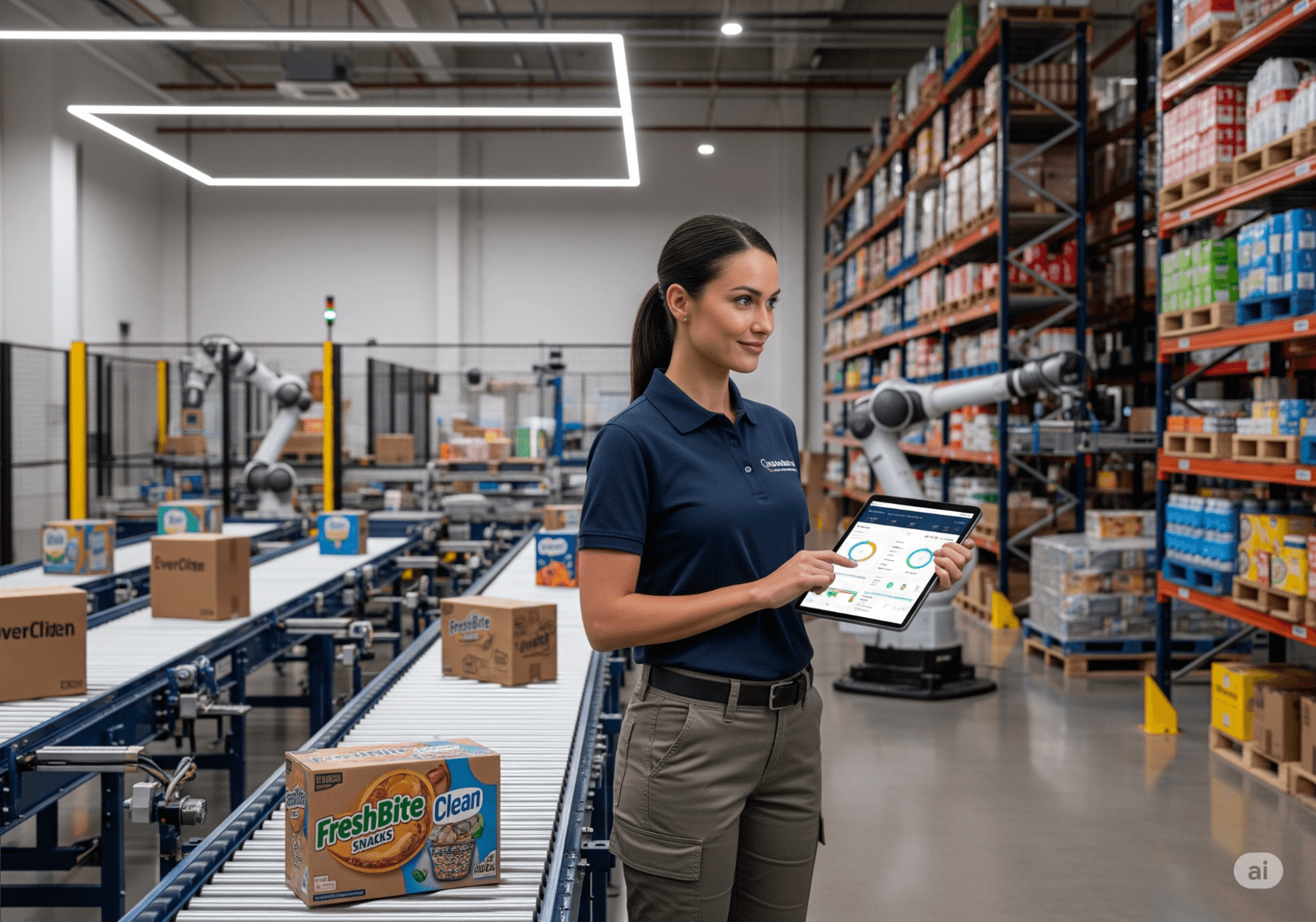
Discover how distributor management in FMCG transforms customer service, ensuring product availability, reliability, and lasting brand loyalty.
For far too long, we’ve thought of customer service as a conversation—a friendly hello at the checkout or a helpful response to an inquiry. But what if we told you that the quality of service for the end consumer starts miles away from the store, in a warehouse? The truth is, the foundation of a great customer experience is an efficient and well-managed distribution network. This is the new frontier of FMCG distributor management. The modern approach, powered by a Distributor Management System (DMS), frames distribution not as a logistical cost, but as a critical component of customer care. This article will explore how superior distributor management in the FMCG sector can ensure products are always available and delivered on time, building lasting brand trust and loyalty.
The Invisible Hand of Service: How Distribution Shapes Customer Experience
When you walk into a store and find your favorite cereal on the shelf, you probably don’t give it a second thought. You just expect it to be there. But that moment of seamless convenience is no accident. It’s the result of a meticulously managed supply chain that works like an invisible hand, guiding that product from the factory to your shopping cart. This section will peel back the curtain on how a well-oiled system, backed by a modern fmcg distributor management system, is the unsung hero of customer satisfaction. When this system fails, the customer feels it immediately in the form of empty shelves and frustration. When it works flawlessly, it prevents that frustration and builds a quiet, powerful sense of brand reliability.
The Domino Effect: From Warehouse to Shopping Cart
A single inefficiency in the distribution chain can trigger a domino effect that ultimately harms the end consumer. Think about it: a late delivery to a distributor’s warehouse, a data entry error on an order, or a disorganized picking process—any of these can lead to a retailer receiving the wrong products or, worse, no products at all. The direct consequence is an out-of-stock situation. We’ve all experienced the disappointment of a missing item. It’s a negative brand experience that has nothing to do with the product’s quality but everything to do with its availability. This is precisely where distribution management in an FMCG system plays a crucial role, acting as the guardian of that promise of product availability.
A DMS as a Customer Service Engine: The Tools of the Trade
A modern DMS for FMCG is much more than a software tool; it’s the engine of a customer-centric distribution model. It gives you an unprecedented level of control and insight. While a DMS offers many technical features, its actual value lies in how it directly benefits the consumer. For instance, features like real-time inventory tracking, automated route optimization, and electronic proof of delivery are not just about operational efficiency; they are the tools that ensure a product is where it needs to be, when it needs to be there. This proactive, data-driven approach is what separates a good distribution network from a revolutionary one.
Real-Time Visibility: The Power of Transparency
One of the most tremendous benefits of a robust distributor management system in fmcg is real-time visibility. When you have an up-to-the-minute view of your inventory and the status of every order and delivery across your entire network, you can act proactively. If a delivery truck is delayed, you know it before the retailer calls to complain. If a product is running low in a specific region, you can reroute stock before a single shelf goes empty. This level of transparency not only helps prevent out-of-stocks but also allows you to be nimble and responsive to shifts in market demand. This continuous flow of information is the foundation of a distribution strategy that prioritizes the customer above all else.
Perfecting the Last Mile: Speed and Accuracy
The “last mile” of delivery—the final leg of the journey from the distributor to the retail store—is the most critical. It’s where all the meticulous planning either pays off or falls apart. This is a key area for fmcg sales and distribution management. A DMS can dramatically optimize this process, ensuring that products are delivered on time and with 100% accuracy. Features like automated route planning minimize travel time and fuel costs, while electronic proof of delivery eliminates discrepancies and billing disputes. Ultimately, this precision guarantees that the product is on the shelf and ready to be purchased the moment a customer arrives. It is at this final step that a brand’s silent promise of reliability is either kept or broken.
The Loyalty Dividend: Building Trust Through Reliability
So, what’s the ultimate payoff of this customer-centric distribution strategy? It’s a significant increase in brand loyalty. In the fiercely competitive FMCG market, a reliable product is a powerful differentiator. Think of a brand that’s always there for you—consistently available, consistently fresh. Over time, that consistency builds trust. It’s an unspoken contract between the brand and the consumer. This trust is a “loyalty dividend” that pays off in repeat purchases, positive word-of-mouth, and an enduring competitive advantage. You can’t put a price on that kind of loyalty.
Beyond the Product: The Brand Experience
A brand’s experience is not limited to the physical product; it’s about every touchpoint a consumer has with it. From the moment they see an advertisement to the moment they decide to purchase. A distribution system, expertly managed by a distributor management system for FMCG, is a crucial part of this experience. It’s the silent assurance that the brand is dependable, organized, and focused on meeting its customers’ needs without fail. This is the modern definition of excellent customer service—a seamless and reliable journey that ends with a satisfied customer and a complete shopping basket.

A Practical Roadmap for the Customer Service Revolution
Ready to transform your distribution network into a powerful customer service engine? Here’s a simple guide to get you started:
- Assess your current distribution network for key inefficiencies. Where are the bottlenecks and weak points?
- Select a DMS that offers real-time visibility and robust reporting features.
- Train your team to use the DMS as a tool for proactive problem-solving, not just data entry.
- Use DMS data to measure and improve key customer satisfaction metrics, such as out-of-stock rates.
- Communicate with your distribution partners to ensure alignment on customer service goals.
Conclusion
Customer service doesn’t start at the checkout counter; it begins with an efficient and transparent distribution system. The companies that succeed in competitive distributor management in the FMCG sector are those that treat their distributors with the same care and focus as they do their end customers. By leveraging a DMS for FMCG, brands can build a system of reliability and trust that directly translates into a superior customer experience. The result? A silent revolution where customer service is redefined by seamless operations, leading to unparalleled brand loyalty and a decisive competitive advantage.
Was this news helpful?







 Yes, great stuff!
Yes, great stuff! I’m not sure
I’m not sure No, doesn’t relate
No, doesn’t relate



